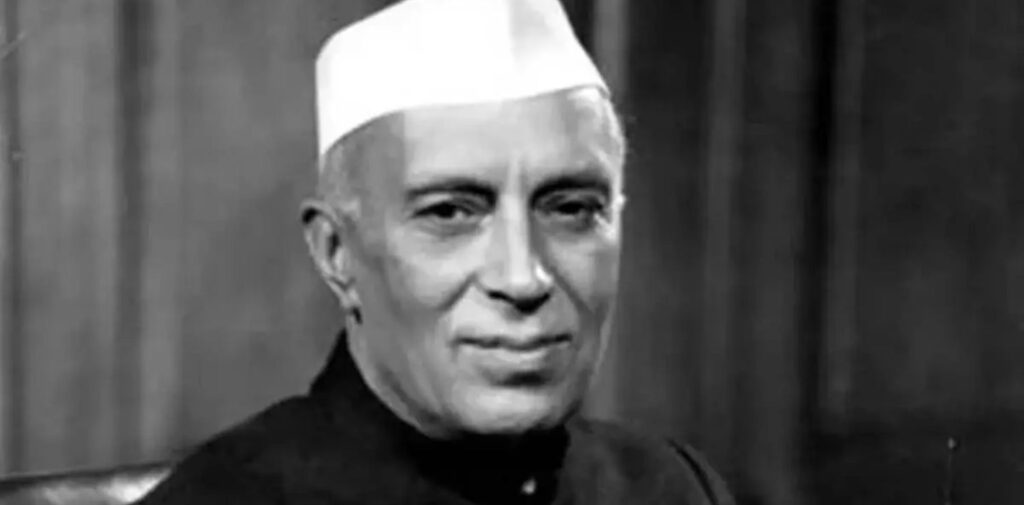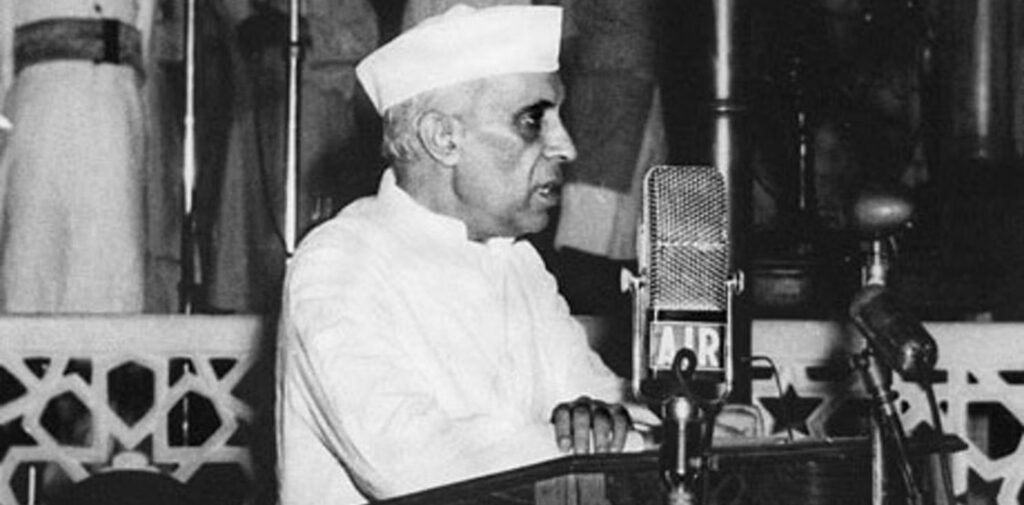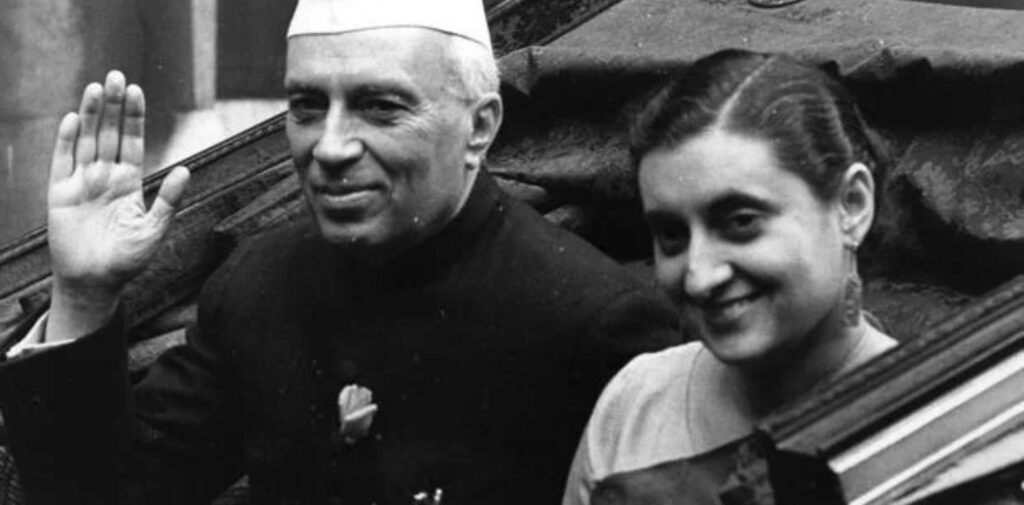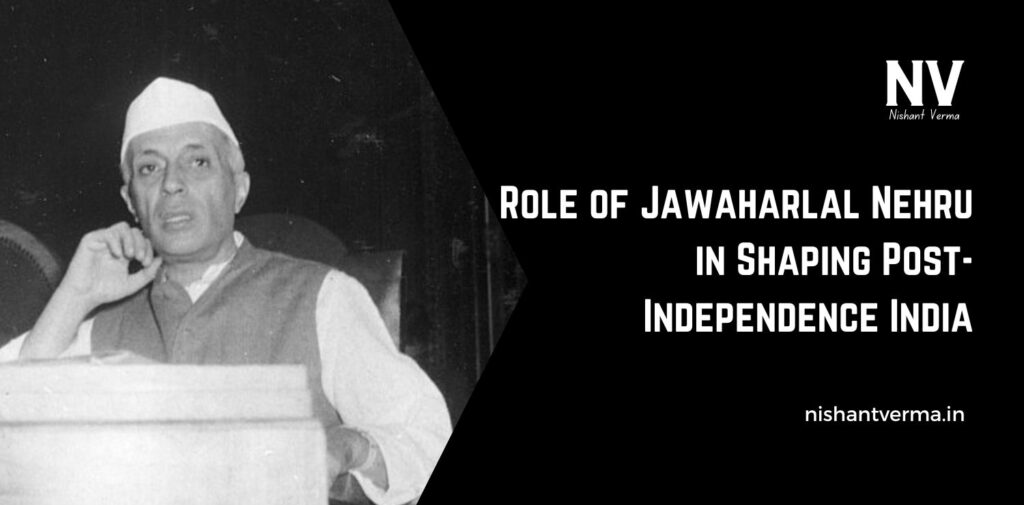Jawaharlal Nehru, the first Prime Minister of India, is often celebrated as the leader who helped build modern India after the country gained independence in 1947. While Nehru made many contributions to the country, it is also important to look at the mistakes and failures in his leadership that had long-lasting effects on India’s development. This article will examine both the positive and negative aspects of Role of Jawaharlal Nehru in shaping Post-independence India.
Who Was Jawaharlal Nehru?
Jawaharlal Nehru was born in 1889 into a wealthy family and was educated in England. He joined the Indian freedom struggle under the leadership of Mahatma Gandhi and became one of the most important leaders of the Indian National Congress (INC). After India became independent on August 15, 1947, Nehru became the first Prime Minister of the country, a position he held until his death in 1964.
Nehru’s vision for India was that it should be a modern, democratic, and secular country. However, not everything he did in his leadership was helpful or beneficial for India’s growth and development.

Nehru’s Vision of a Modern India: Successes and Failures
Nehru dreamed of making India a modern and self-sufficient country. To achieve this, he focused on building large industries, improving education, and strengthening scientific and technological research. These were positive steps, and in some areas, India did make progress. But there were also several mistakes in his approach that hurt the country in the long run.
Positive Aspects:
- Industrialization: Nehru pushed for the development of industries, building large public sector industries in steel, power, and transportation. His government built important factories and projects, such as the Bhilai Steel Plant and the Hirakud Dam. These were important steps towards making India self-reliant.
- Education and Science: Nehru believed in the power of education and science. He set up institutions like the Indian Institutes of Technology (IITs) and the Indian Space Research Organisation (ISRO), which played a role in India’s future growth in technology.
Problems with Nehru’s Vision:
- Focus on Heavy Industries: While Nehru focused on building heavy industries, he neglected smaller industries, which were crucial for providing jobs and supporting the rural economy. This led to a slow and uneven growth in the country, with much of the population still living in poverty.
- Centralized Planning: Nehru followed a policy of centralized planning where the government controlled most aspects of the economy. This resulted in inefficiency and a slow-moving economy. Small businesses and the private sector struggled to grow under this system, which created a gap between rich and poor.
Nehru’s Mistakes in Foreign Policy
Another area where Nehru’s leadership faced heavy criticism is in his handling of India’s foreign relations.
The China Conflict (1962):
One of the biggest failures in Nehru’s foreign policy was his handling of relations with China. In the 1950s, Nehru had a very friendly attitude towards China and believed that it would be a peaceful neighbor. However, in 1962, China attacked India in a border war and defeated the Indian army easily. Nehru’s lack of preparation for the conflict and his trusting attitude toward China left India vulnerable. The defeat was a huge embarrassment for India and shook the confidence of the country.
Pakistan and Kashmir:
Nehru’s handling of India’s relationship with Pakistan also caused long-term problems. After India gained independence, Pakistan and India both claimed the region of Kashmir. Nehru made the decision to take the issue to the United Nations (UN), but this did not help solve the problem. Instead, it led to multiple wars and ongoing tension between the two countries. Nehru’s decision to make Kashmir a part of India without fully considering the region’s complexities set the stage for continuous conflict.

Problems with Nehru’s Economic Policies
Nehru’s economic policies, while aimed at developing the country, led to several problems for India’s economy.
License Raj:
Nehru introduced the License Raj, a system where businesses needed government permission (or a “license”) to produce goods or start new ventures. This system made it very difficult for small businesses to grow and limited the growth of private industry. As a result, India’s economy became sluggish, and there was less innovation. The License Raj stayed in place for decades and became a huge obstacle to India’s economic growth.
High Levels of Poverty:
Although Nehru’s government focused on industrialization, it failed to significantly reduce poverty. The rural population continued to suffer from lack of infrastructure, poor education, and no access to basic services. The focus on big industries and neglecting agriculture left millions of farmers struggling. While Nehru’s government made some efforts to help the poor, the results were not enough to bring about real change in the lives of ordinary people.
Nehru and the Role of the Congress Party
Nehru’s leadership also led to the dominance of the Congress Party in India’s politics. This meant that for several decades, political power in India was concentrated in the hands of a few people, most of whom were from Congress. This led to authoritarianism, as Nehru often ruled with a strong grip, sidelining other political parties. While Nehru’s government was democratic on paper, in practice, there was very little opposition or room for alternative viewpoints.
Nehru’s influence over the Congress Party meant that it became heavily dependent on his leadership. This continued even after his death, with the Congress Party dominated by members of his family, especially his daughter, Indira Gandhi. This dynastic politics harmed the democratic system, as it made the Congress Party less open to new ideas and leaders.
Nehru’s Impact on India’s Social Fabric
Nehru was a strong believer in secularism, which meant that he wanted to keep religion and politics separate. While this vision was important for maintaining unity in a country as diverse as India, his government sometimes pushed secularism in ways that created problems.
Religious Tensions:
Nehru’s policies, particularly those that favored the minority Muslim community, led to some resentment among Hindus. His government’s secular stance often alienated religious groups and created divisions in society. Some argue that his government did not do enough to prevent growing communal tensions between different religious communities, which led to violence in certain parts of India.

Nehru’s Legacy: A Mixed Picture
While Nehru’s leadership did have some positive outcomes—such as the development of important scientific institutions, the establishment of a democratic framework, and the creation of a strong central government—there were also significant mistakes. His economic policies, particularly the License Raj, hurt the growth of industries and jobs. His foreign policy blunders, especially the defeat in the 1962 war with China, damaged India’s international reputation. Moreover, his approach to Kashmir and Pakistan created long-term conflicts that have continued for decades.
In many ways, Nehru’s policies laid the foundation for the challenges India faces even today. While he worked hard to shape India’s future, his wrong decisions in key areas also left a lasting impact that made the path of progress more difficult.
Conclusion: Role of Jawaharlal Nehru
Jawaharlal Nehru is remembered as a key figure in India’s history, but his leadership is not without its flaws. He did bring India into the modern world, but his economic policies, handling of foreign relations, and concentration of power in one party created many problems. As we reflect on Nehru’s legacy, it is essential to understand both his successes and his mistakes, so we can learn from them and build a better future for India.




